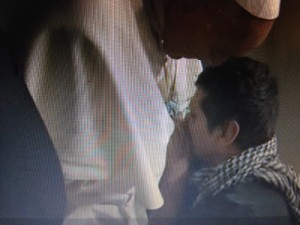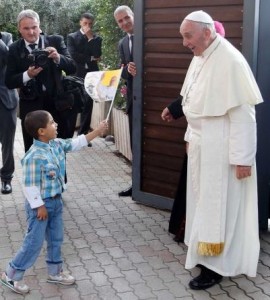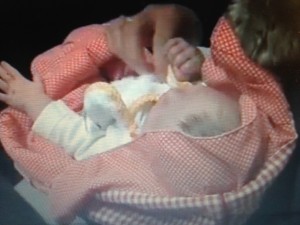On the 4th October, the feast of St. Francis, Pope Francis went for the first time in his life to Assisi. This is where St. Francis was born, where he died, where he is buried. The whole town is filled with a Franciscan spirit that sometimes is strongly alive, sometimes is a little distorted.
Nothing could be more normal than that; for such contradictions exist in all parts of the Church and in each one of our own lives. Yes, we are alive, but from time to time, perhaps for some people more than others, the external living is, in reality, a ‘non life’; compare this with something like the ten lepers who were excluded from the village, on the borders of Galilee and Samaria, as described in last Sunday’s Gospel (Lk 17: 11-19). They felt ‘cut off’ from God and from people. Only God could cure them and this had not yet happened: they were ‘cut off’ by the villagers, as their disease was so contagious. Together, the lepers cried to Jesus, from a distance outside the village: “Jesus, Master, take pity on us!” Jesus did not do anything but simply told them to go to see the priests, and this they did; the priests could declare that God had cured them, and they could then return to the community. One cured leper seems to have disobeyed our Lord. He came back and threw himself at Jesus’ feet, in thanksgiving. Jesus commended him. It is as though Jesus needs to be close to a person for him, truly, to be saved, as this foreign Samaritan leper was:
“Were not all ten made clean? The other nine, where are they? It seems not one has come back to give praise to God, except this foreigner. Stand up and go on your way. Your faith has saved you.”
 |
Pope Francis just before the meal with the “down and outs”
Does not our own experience teach us the same? If Jesus is too close, I may feel ‘threatened’ in my comfort zone. But Jesus, close to us, gives us true life. In fact, those village people, who cut off their fellow human beings, were those who, like the lepers, lived a ‘non-life’. Jesus meant nothing to them and Jesus never performed miracles in the villages: in his own Nazareth, they lacked faith. These village people were content to live in their own ‘rut’. They treated their leprous neighbours as ‘non-people’, leaving them in their isolated misery, and they ignored the person, and message, of Jesus, so letting that ‘non-life’ enter their own hearts. The curing of the lepers – might have led to the curing of the villagers – I wonder!
 |
Pope Francis and young boy just before lunch
Returning to Pope Francis, in Assisi, it has been noted by many journalists that the Pope spent a lot of time with those on the edges of society, when he was there on the 4 October. “Papa Francesco seemed happier with disabled and poor than in the sumptuous basilica” said one. On this note, let me point you to this short two minute video on ‘YouTube’, that shows Pope Francis having his dinner with down and outs in Assisi, at http://www.youtube.com/watch?v=aPbruR33s3s . These people are regularly fed by a kind group of caring people. One man ‘collars’ the Pope and seems to dominate him!
 |
Pope spies this one month old baby just before lunch in the Holy Land
Pope Francis spies a lady with a young baby in her arms and enquires how old the baby is: “one month”, is the reply, and the Pope gives her a loving smile of recognition. Then he says grace, and thanks them all for inviting him to lunch with them.
With Pope Francis, those living ‘on the edge’ are more important than the tombs of the dead, and the stones and frescos in the basilicas. He is not forcing his views on us, but Pope Francis’ actions speak a lot louder than his words. Maybe all of us could ask the Lord to enliven us, to give life to those parts of us where there is ‘non-life’, and then, maybe, we will show the presence of Jesus to this world of ours – a world that is searching so hard for meaning and sense.
Father Jonathan
